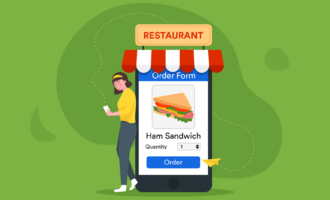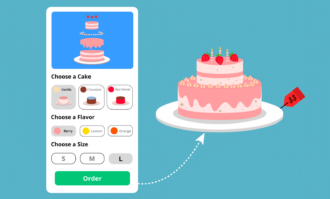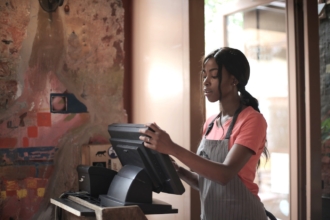The three most important things you need to start a restaurant are passion, the ability to accept criticism, and a rock-solid plan.
The tech industry is full of dreamers. People fresh out of college with little or no experience have created major startups like Google and Facebook. They forged their own paths and did things nobody ever had before.
Venture capitalists fund young entrepreneurs based less on their experience and more on their passion — and passion is necessary not just for achieving success but also responding to criticism and adversity.
What do your friends think of your cooking? No, what do they really think of your cooking? If they’ve never criticized it, you’ve never gotten the full story. If you’ve heard criticism but never accepted it, then you’re going to struggle to grow, innovate, and compete in the restaurant game.
As you know, starting a restaurant is much more than just having a passion for cooking and coming up with a menu. It takes a lot of careful planning.
Writing a business plan does more than attract investors. It helps you to think critically about your business. It also forces you to gaze into the future and think about all the details you’ll need to work out before you get started.
Drafting a traditional business plan
A traditional business plan will help you organize your business and provide a roadmap for the future of your restaurant. And it’s probably necessary if you’re going to seek funding. Your restaurant business plan should include the following sections.
Executive summary
This is the place where you’ll talk about the business details of your restaurant. Where is your preferred location? What will set you apart from similar restaurants in the area?
Provide a mission statement here. It should be simple and clear — just one or two sentences to describe your restaurant. Try to make it something that resonates with you on a personal level; don’t use vague corporate language.
This is also where you should include financial and staff information. Think about how much the business will cost and what you will charge to make ends meet; add that information to your plan.
Provide some background on everyone who will be involved in your business and what their roles will be. It’s safe to assume that you’ll hire people as you go. Make sure you plan for their wages.
Also mention the people you already know who will be directly involved. For example, if your friend Susan will be handling business and accounting, mention her. And if Jeff, your chef friend with a degree from Le Cordon Bleu, will be planning meals, mention him as well.
Company description
This section is for more day-to-day details about your business. This is your chance to boast a little bit and share your passion. What kind of food will you offer? What will your vibe be? Will you be formal or informal? How about cozy or sleek?
This is also where you’ll share your competitive advantage. Just how awesome is Jeff the chef? Will the feng shui captivate and entrance diners? How will you succeed when so many have failed?
Market analysis
This section is where the ability to take criticism and make adjustments comes into play. You need to know for sure that a lot of people will love your food and give you five-star Yelp reviews. You need to analyze your market.
Many cities have kitchens available for rent. You can use these kitchens and a Craigslist ad to gather as many people as possible to try your dishes.
Make lists of the recipes you’re going to prepare and the questions you’re going to ask. Be sure not to ask leading questions like, “How good was it?” Ask questions that you might be afraid to hear the answers to, like, “On a scale of one to five — with one being not enough, three being just right, and five being too much — how tart was it?”
Learn what people think of the flavor, texture, and presentation. Make sure the items you’ll be plating together complement each other well.
Gather as much information as you can and analyze it. Don’t be afraid to go back to the drawing board and try again if things didn’t go as planned. Doing so can show dedication to creating a great dining experience.
Once you have outstanding data, share your analysis in this section.
Organization and management plan
Now it’s time to talk about how you’ll organize your restaurant staff. How many chefs, line cooks, and dishwashers will you have? How many servers, greeters, and janitors?
Also talk about how you’ll manage your business. Will you have someone dedicated to management and bookkeeping? Or will you handle it yourself in the hours when the restaurant is closed?
Discuss the legal structure. What kind of corporation will you create — or will you be a sole proprietor? Here’s a tip: Always go with a corporation to protect yourself legally.
It would be a great idea to add an organizational chart to illustrate your staff structure. You may even want to collect the CVs and resumes of the people you know will be on your team (but you’ll share these in the appendix, as you’ll see a little later).
Marketing and sales plan
Marketing is a vast field that has changed a lot over the last 20 years. Here are a couple of things to keep in mind.
First, think about who you want to serve. What kind of people are they? Are they dining for prestige, comfort, or an experience? What will they talk about when they eat? What will keep them coming back again and again? Find your people and establish your restaurant as the place where they’ll go to eat.
Next, build a strategy, not a tactic. Putting an ad in the paper is a tactic. Giving people free shakes when they share food photos with your hashtag is a tactic. You need to combine many tactics that all work together as one unified strategy.
Seth Godin’s This is Marketing is a fantastic resource to help you think like a marketer. Once you’ve figured out your strategy, provide the details and include your cost analysis here.
Funding request
If you need help funding your restaurant, this is where you’ll share how much you need, why you need it, and what you need it for. Aim for a five-year projection. Think long and hard about how much everything will cost, and do some research.
Look at all of the previous sections for guidance on figuring out costs. Think about staff, incorporation fees, permits, credit card processing, marketing, etc. In addition, think about the cost of leasing a space and the renovations necessary to make it a restaurant. You also need to consider equipment, decor, and seating.
Plan for worst-case scenarios as well. What will you do if everyone gets food poisoning one night from some bad chicken? How will you handle an inspection that finds rats?
Finally, think about the future. How do you plan to pay off your debt? Will you expand to multiple locations? Will you need to renovate at some point in the near future?
Financial projections
This is where you can illustrate how your business will be a safe investment. Make multiple projections of reasonable, estimated revenues. For example, come up with a projection based on facts you’ve gathered about similar restaurants.
Then provide optimistic and pessimistic alternatives based on a 25 percent margin of error. It’s a good sign if you can show that you’ll still be successful even with an extremely small margin of error.
Show your estimated income month by month for the first two years, quarterly for the third year, and annually after that. Add any collateral or extra funds you have to support your restaurant. Illustrate how your income data correlates with your funding and debt repayment. Use charts and graphs to tell the story of the growth of your business.
Appendix
This is where you’ll include the resumes and CVs you’ve collected as well as any legal documents. If you’ve already gotten permits, incorporation paperwork, or contracts, share them here.
And, of course, make sure to share the awesome pictures of your food and testimonials you gathered from your market research.
Where to get more information
Starting a restaurant is challenging, but the path is well worn. Do your homework and study what makes restaurants succeed and fail. Stand on the shoulders of giants and learn to avoid costly mistakes.
The SBA (Small Business Administration) provides a lot of useful information on starting a business. Its page on business plans has two solid examples to help guide you. Jotform also offers a number of business plan templates.
The SBA provides lots of valuable information and can set you up with mentors and counselors. The mentors are usually retired individuals who donate their time to helping others succeed. If you live in a metropolitan area, the SBA probably already has people who have owned restaurants.
Getting help and counseling from the SBA costs you nothing. So write your plan and go get started.




































Send Comment: